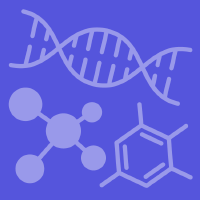Topic Editors



Computational Intelligence and Bioinformatics (CIB)
Topic Information
Dear Colleagues,
Over the past few years, there has been increasing interest in the development of computational tools and approaches that process biological, medical, and health data to improve humans’ knowledge by identifying hidden patterns, discovering novel treatments or repurpose drugs, and predicting possible biomolecular interactions or functions. In this context, classic computational approaches (such as data mining, machine learning, fuzzy logic, and soft computing) or deep-learning techniques have been proposed. Nevertheless, the tremendous amount of multi-modal data that is made available through high-throughput experiments poses many challenges, mainly due to the “three-V” characterizing Big Data (volume, variety, and velocity) and the need to develop effective data reduction and integration techniques. The purpose of this Topic is to collect high-quality papers presenting novel computational tools and approaches that can be exploited in the wide arena of bioinformatics for the acquisition, storage, and analysis of biological data and to study their suitability in different applicative contexts.
Dr. Marco Mesiti
Prof. Dr. Giorgio Valentini
Dr. Elena Casiraghi
Dr. Tiffany J. Callahan
Topic Editors
Keywords
- CI applications in bioinformatics and systems biology
- CI for network medicine
- bioinformatics databases
- biological data visualisation
- motif and pattern discovery
- DNA assembly, clustering, and mapping
- gene identification and annotation
- parallel algorithms for biological analysis
- biomedical image processing
- molecular evolution and phylogeny
- taxonomy and ontology networks
- biological knowledge bases: prediction and applications
- graph representation learning and applications in bioinformatics
- sequence analysis and alignment
- molecular modelling and simulation
- regulatory network and pathway analysis
- functional genomics and large-scale functional genomics
- analysis of protein interaction with other cellular constituents
- protein structure and interaction prediction
- management of genomics and proteomics data
Participating Journals
| Journal Name | Impact Factor | CiteScore | Launched Year | First Decision (median) | APC | |
|---|---|---|---|---|---|---|

Applied Sciences
|
2.5 | 5.3 | 2011 | 18.4 Days | CHF 2400 | Submit |

BioMedInformatics
|
- | 1.7 | 2021 | 22 Days | CHF 1000 | Submit |

BioTech
|
2.7 | 3.7 | 2012 | 26.1 Days | CHF 1600 | Submit |

Genes
|
2.8 | 5.2 | 2010 | 14.9 Days | CHF 2600 | Submit |

Computation
|
1.9 | 3.5 | 2013 | 18.6 Days | CHF 1800 | Submit |

MDPI Topics is cooperating with Preprints.org and has built a direct connection between MDPI journals and Preprints.org. Authors are encouraged to enjoy the benefits by posting a preprint at Preprints.org prior to publication:
- Immediately share your ideas ahead of publication and establish your research priority;
- Protect your idea from being stolen with this time-stamped preprint article;
- Enhance the exposure and impact of your research;
- Receive feedback from your peers in advance;
- Have it indexed in Web of Science (Preprint Citation Index), Google Scholar, Crossref, SHARE, PrePubMed, Scilit and Europe PMC.


